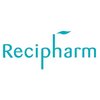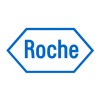Filter interviews by
Multani Pharmaceuticals Production Chemist Interview Questions and Answers
Multani Pharmaceuticals Production Chemist Interview Experiences
3 interviews found
I applied via Indeed and was interviewed in Jan 2022. There were 2 interview rounds.

(1 Question)
- Q1. Preparation method of chyawanprash Compression of tablet hardness d.t. And composition of products
Interview Preparation Tips
I applied via Indeed and was interviewed in Feb 2022. There were 2 interview rounds.

Interview Preparation Tips
I applied via Campus Placement and was interviewed in Feb 2021. There were 3 interview rounds.
Interview Questionnaire
1 Question
- Q1. Related to Ayurveda, about yourself, what you expect from company, how much salry u want, tell me about company etc
Interview Preparation Tips
Give answer only according to question accurate.
Always keep smile on face , don't feel to interviewer that you r nervous.
Top trending discussions






Interview questions from similar companies

I applied via Walk-in and was interviewed in Nov 2024. There was 1 interview round.
(4 Questions)
- Q1. Self introduction
- Q2. Working process
- Q3. Salary Discuss
- Q4. Experience to previous
Interview Preparation Tips
- Manufacturing Engineering

Production Officer Interview Questions & Answers
Immacule Life Sciencesposted on 13 May 2018
I appeared for an interview in Mar 2018.
Interview Preparation Tips
1. Struggle. (level may different like student or employee)
2. Compromise.
3. Sacrifice.
Skills: Technical skill , Problem Solving

I applied via Company Website and was interviewed in Dec 2019. There were 3 interview rounds.
Interview Questionnaire
2 Questions
- Q1. No matters what questions were asked to me... Than what?
- Q2. The best advice is what you work get the deep knowledge about.

I applied via Company Website and was interviewed in Jun 2020. There were 3 interview rounds.
Interview Questionnaire
3 Questions
- Q1. Self introduction
- Q2. Qualification process for AHU system. Handling of equipment
- Ans.
Qualification process for AHU system involves handling of equipment to ensure compliance with standards.
Qualification process involves testing and verifying the performance of AHU system.
Equipment handling should follow standard operating procedures to prevent contamination.
Documentation of the qualification process and equipment handling is necessary for compliance.
Examples of equipment handling include cleaning, cali...
- Q3. GDP. GMP. Change control. CAPA safety related
Interview Preparation Tips
Safety GMP must
Communication skill must
Don't answer if you don't understand the question

I applied via Recruitment Consulltant and was interviewed before Oct 2021. There were 3 interview rounds.

Leadership and decision making skills.
Technical knowledge based on job profile.
(2 Questions)
- Q1. Related to job profile questions
- Q2. Have good communication and presentation skills.
Interview Preparation Tips

Junior Executive Interview Questions & Answers
Swiss Garnier Life Sciencesposted on 21 Jan 2025
I applied via Walk-in and was interviewed before Jan 2024. There were 2 interview rounds.
(2 Questions)
- Q1. Self introduction
- Q2. Basic about tablet formulation
(2 Questions)
- Q1. Self Introduction
- Q2. Salary related queries
Interview Preparation Tips
- Pharmaceutics

I applied via Campus Placement and was interviewed in Aug 2021. There were 3 interview rounds.
Interview Questionnaire
3 Questions
- Q1. Tell me about yourself,tell me about your process.. can you relate with QMS activity..
- Q2. Can you operate as shift encharge
- Ans.
Yes, I have experience as a shift encharge and can handle the responsibilities effectively.
I have previously worked as a shift encharge in my previous job.
I am familiar with the duties and responsibilities of a shift encharge.
I am capable of managing and supervising the team during the shift.
I can ensure that the production targets are met and quality standards are maintained.
I can handle any issues or emergencies that...
- Q3. SWOT analysis
Interview Preparation Tips
If you don't know the answer then don't try to lie... Say just . I DON'T KNOW .. sorry sir...
Multani Pharmaceuticals Interview FAQs
Tell us how to improve this page.
Multani Pharmaceuticals Interviews By Designations
Interview Questions for Popular Designations
- Chemist Interview Questions
- Lab Chemist Interview Questions
- Senior Chemist Interview Questions
- Chemist Quality Control Interview Questions
- QA QC Chemist Interview Questions
- Junior Chemist Interview Questions
- Assistant Chemist Interview Questions
- Senior Production Chemist Interview Questions
- Show more
Interview Questions from Similar Companies
Multani Pharmaceuticals Production Chemist Reviews and Ratings
based on 3 reviews
Rating in categories
|
Sales Officer
22
salaries
| ₹1.5 L/yr - ₹4.3 L/yr |
|
Production Chemist
17
salaries
| ₹1.7 L/yr - ₹4.2 L/yr |
|
Assistant Manager
11
salaries
| ₹4.5 L/yr - ₹12 L/yr |
|
Research Officer
10
salaries
| ₹4 L/yr - ₹5.9 L/yr |
|
QC Chemist
9
salaries
| ₹1.9 L/yr - ₹2.4 L/yr |

Apotex Research

Novartis Healthcare

Symbiotec Pharmalab

Recipharm Pharmaservices
- Home >
- Interviews >
- Multani Pharmaceuticals Interview Questions >
- Multani Pharmaceuticals Production Chemist Interview Questions













